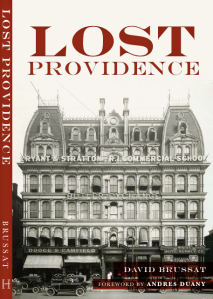
A traditional Batak house, Sumatra, Indonesia. (wikipedia)
Christopher Alexander – well known for his Pattern Language, his four-volume The Nature of Order, and for his research on the natural creation of form in architecture and digital technology – wrote an excellent open letter to members of the TradArch list in 2002. It urged those interested in promoting a classical revival to broaden the “tent” of classicism.

Christopher Alezander
Alexander’s letter has come up again following the recent second meeting of TradArch listers in Raleigh, N.C. I attended the first one in Charleston last year, and this one in Raleigh, which I was unable to attend, seems to have been equally vigorous and (no surprise) equally challenged at achieving consensus on the difficult issues faced by classicists – theoreticians and practitioners, architects, artists and artisans alike.
Alexander does not seem (as I read his letter) to buy into the desire of some to “capture territory” from modern architecture – such as Andres Duany, who seems to go even beyond resuscitating kidnapped classicists like Louis Sullivan. But he does argue against defining classicism as strictly a matter of architecture derived directly from the canons of Athens and Rome. He does not seem to doubt that, say, Gothic is a valuable part of the classical canon. But more particularly he wants classicists to engage the traditional and vernacular work of the broad range of non-Western societies that are now seeing their cultures eviscerated by modern architecture. He writes:
All traditional architecture – that is, almost all the architecture built in Indonesia, Japan, Russia, Africa, Turkey, Iran, India, China – this dazzling wealth of forms, representing building, and art, and design for several millennia, is our heritage; and it is important because, regardless of its particular style, nearly all these buildings exemplify, in one way or another, a deeper thing: the presence of living structure.
This is wise, and it is in no way a retreat from the life-giving attributes of mainstream classicism. He voices a concern expressed at last year’s TradArch meeting by Nathaniel Walker, of the College of Charleston, that the classical revival could be perceived as narrow, backward-looking, elitist, even racist by many around the world. I have tended to resist that message myself, but only to the extent that it seems to open the door of classicism to modernist influences. Not that modernism has absolutely nothing to teach classicists; but almost nothing is pretty close to the actuality.
Most classicists and supporters of tradition in architecture, art and design understand that intuitively. And if Alexander, Walker and, for that matter, Duany are really saying the same thing – expanding the classical tent but excluding all but the very rare classicizing aspects of modernism – then I think it behooves classicists to listen carefully. If these three are not saying essentially the same thing, then the differences should be honestly identified and debated.
Sombreros off to Bin Jiang of the TradArch list for posting Alexander’s letter.
(I’ve mentioned Alexander many times on my blog and, in the olden days, my columns for the Providence Journal. My most extensive attempt to describe his thinking was in my review of Design for a Living Planet, by Nikos Salingaros and Michael Mehaffy.)

Eishen School, Tokyo, by Christopher Alexander. (Hajo Neis/ArchitectureWeek.com)



Dave,
Thanks for this.
I studied under a student/colleague of Chris Alexander. Have actually designed employing Pattern Language as the building component building blocks.
My understanding of and approach to city planning is in large part based on his article attached entitled âA City is not a tree.â (Alexander originally trained as a Mathematician) .
Ken Orenstein
330 Lloyd Avenue
Providence, RI 02906-4212
401.699.2121
kenorenstein@gmail.com
LikeLike